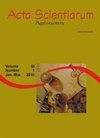如何写一篇科学文章的讨论部分
IF 1.2
4区 农林科学
Q3 AGRONOMY
引用次数: 6
摘要
讨论是科学文章中最难写的部分,因为必须使用认知技能来适当地将研究结果置于背景中。在本文中,我们指导科学作家,特别是没有经验的人,如何根据Docherty和Smith(1999)的一篇文章构建讨论部分。这些作者认为,编写讨论时应按下列顺序组织资料:(a)主要调查结果说明;(b)研究的优点和缺点;(c)与其他研究相比的优势和劣势,特别讨论结果中的任何差异;(d)研究的意义:可能的机制和影响;(e)未解之谜和未来研究。该序列的每个组成部分都用文献中的例子进行了详细讨论。本文章由计算机程序翻译,如有差异,请以英文原文为准。
How to write the discussion section of a scientific article
he Discussion is the hardest section of a scientific article to write, as cognitive skills must be used to properly contextualize the findings of a study. In this article, we guide scientific writers, particularly unexperienced ones, on how to structure a Discussion section based on an article by Docherty and Smith (1999). According to these authors, a discussion should be prepared by organizing information in the following order: (a) statement of principal findings; (b) strengths and weaknesses of the study; (c) strengths and weaknesses in relation to other studies, discussing particularly any differences in results; (d) meaning of the study: possible mechanisms and implications; and (e) unanswered questions and future research. Each component of this sequence is discussed in detail with examples drawn from the literature.
求助全文
通过发布文献求助,成功后即可免费获取论文全文。
去求助
来源期刊

Acta Scientiarum. Agronomy.
Agricultural and Biological Sciences-Agronomy and Crop Science
CiteScore
2.40
自引率
0.00%
发文量
45
审稿时长
>12 weeks
期刊介绍:
The journal publishes original articles in all areas of Agronomy, including soil sciences, agricultural entomology, soil fertility and manuring, soil physics, physiology of cultivated plants, phytopathology, phyto-health, phytotechny, genesis, morphology and soil classification, management and conservation of soil, integrated management of plant pests, vegetal improvement, agricultural microbiology, agricultural parasitology, production and processing of seeds.
 求助内容:
求助内容: 应助结果提醒方式:
应助结果提醒方式:


